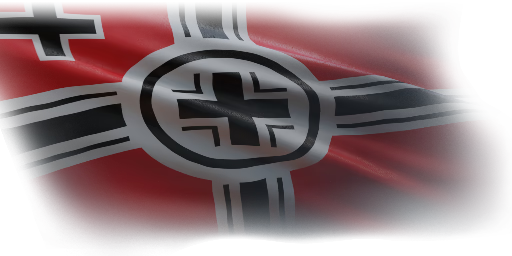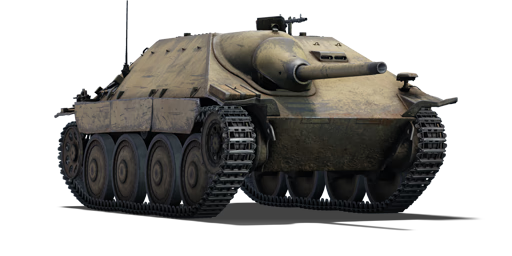



The Jagdpanzer 38(t) (German armoury designation: Sd.Kfz. 138/2) (also known by the misnomer "Hetzer" (Endurance Hunter) in this case) began development at the end of WWII, in a state with Germany on its knees and fighting on several fronts while trying to hold its ground. The Jg.Pz.38(t) was meant to replace the Marder series of TDs as they were underprotected. It used the chassis of the Panzer 38(t) with some modifications like heavily angled front armour. The tank carried a powerful 75 mm PaK39 L/48 cannon. Due to its low profile, it could be well hidden, and its sloped front armour granted it some protection against cannons such as the 76 mm M3 or the 76 mm-armed T-34s. It suffered however from poor side armour, able to be penetrated even by AT rifles, and the crew compartment was very cramped, with only 3 hatches for all crewmembers. A total of 2,287 were produced from 1944 to 1945.
It was one of the first vehicles introduced in the opening of "Ground Forces" in Update 1.41 after the Closed Beta Test. The Jagdpanzer 38(t) is a low-profile tank destroyer capable of concealing itself and annihilating adversaries as they come, equipped with a powerful main gun, yet with impressive front armour capable of withstanding a moderate amount of enemy fire. It is quite versatile for a TD, its gun is able to kill most enemies around its BR, and its front armour is good enough to deal with most foes. When taking advantage of hills and chokepoints on the map, it can become very hard to kill from the front and a very powerful asset at long ranges or when surrounded by allies. When alone, it is vulnerable as its side armour can be penetrated even by autocannon fire. With this in mind, the Hetzer is especially vulnerable to aircraft.
| Ammunition | Type | Armor penetration (mm) at a distance: | |||||
|---|---|---|---|---|---|---|---|
| 10 m | 100 m | 500 m | 1000 m | 1500 m | 2000 m | ||
| APCBC | 145 | 143 | 130 | 116 | 104 | 93 | |
| HE | 10 | 10 | 10 | 10 | 10 | 10 | |
| HEAT | 80 | 80 | 80 | 80 | 80 | 80 | |
| APCR | 182 | 177 | 159 | 140 | 122 | 107 | |
| Smoke | 3 | 3 | 3 | 3 | 3 | 3 | |
| Belt | Belt filling | Armor penetration (mm) at a distance: | |||||
|---|---|---|---|---|---|---|---|
| 10 m | 100 m | 500 m | 1000 m | 1500 m | 2000 m | ||
| AP/AP/AP-T | 13 | 12 | 7 | 3 | 2 | 0 | |












Mobility | |
|---|---|
Protection |
|---|
Firepower | |
|---|---|